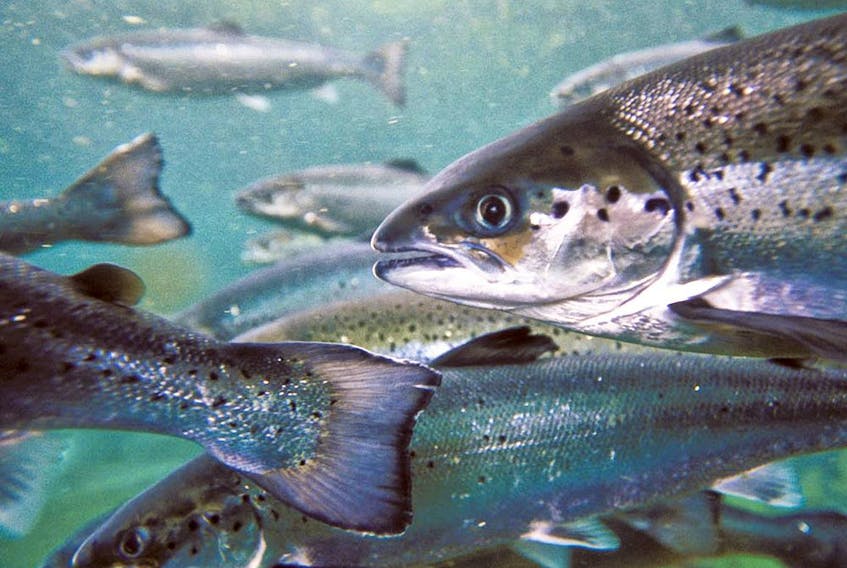LYNN KAVANAGH • Guest Opinion
I still recall my excitement when Victoria Braithwaite’s book, “Do fish feel pain?” was published, giving legitimacy to fish pain.
As an advocate for farmed animals, I wanted to do more for fish. Globally, billions of fish are killed in the aquaculture (fish farming) industry each year, with trillions more caught and killed in the wild. They are subjected to some of the most brutal treatment of any animal farmed or killed for food, though they receive little attention, compared to that given to the plight of other farmed animals.
In recent years, however, interest in fish pain and welfare has grown, due to the efforts of animal welfare and rights activists, but also scientific researchers. As our knowledge about fish behaviour, physiology and neurobiology grows, it becomes harder to deny fish are sentient and experience pain like other animals.
Fish have shown advanced cognition, including evidence of long-term memories and behaviours like co-operation and even tool use. Recent studies indicate fish display complex emotional responses to environmental stimuli. Research has also grown in the area of fish pain, one of the more controversial areas of fish biology research, showing that fish exhibit behavioural responses to pain, far beyond what could be considered a reflex response.
Nonetheless, despite the mounting evidence on fish pain and sentience, the scientific community has not yet reached a consensus on this. The “fish pain skeptics” cast doubt on the research suggesting fish have the capacity to feel pain, citing it as flawed.
There may be other reasons at play, too. Most of us find it harder to relate to fish than other farmed animals like cows and pigs. The latter make sounds of joy and bellows of distress, and they more closely resemble us. Fish lack vocal cords and look remarkably different, making visual cues difficult to read, and their homes (whether in the ocean or fish farm pens) are out of sight. These factors make it easier to deny fish consciousness and sentience and, by extension, moral consideration.
Despite the controversy, fish welfare is becoming an important issue among consumers and is a particularly hot-button topic in the aquaculture industry. Practices such as slaughter, feed withdrawal, stocking density and handling are not unlike those that have come under fire in the intensive farming of cows, pigs and chickens. It is common practice, for example, to slaughter fish via a method called “ice slurry slaughter” whereby fish are removed from water and left to slowly asphyxiate.
On most industrial farms, fish are often housed in unnaturally barren conditions with little room to move. Fish may suffer from lesions, fin damage and other debilitating injuries.
Another problematic practice is feed withdrawal. Fish are taken off food for short periods for management reasons (handling, vaccinations) but, in some cases, the animals are starved for up to two weeks to empty their gut before slaughter.
The Canadian Aquaculture Industry Alliance (CAIA) has taken its cue from both science and public sentiment, initiating the first code of practice for fish (focused on salmon species). The codes of practice are developed through the National Farm Animal Care Council (NFACC), which oversees the process. Priority welfare issues are identified, and standards are set based on industry practice and science.
This code is an important first step for fish welfare in Canada. It shows progress, and some inhumane practices are being phased out, such as ice slurry slaughter, but some requirements in the code are weak and should be stronger. Fasting fish for up to two weeks is permitted, as are overcrowded conditions and 24-hour lighting periods that are known to have negative welfare impacts. Compared to the RSPCA standard for farmed Atlantic salmon, for example, there are some cases where this code favours existing practices rather than improving upon those with a cause for concern.
But this draft code isn’t the final word. The public can submit comments until Jan. 7, 2021 and be a voice for these often-forgotten animals farmed in the billions for food.
More research is needed to better understand the practices that compromise fish welfare. In the meantime, the ethical implications of assuming fish feel no or limited pain are profound. On the other hand, taking a precautionary approach and putting actions in place to protect their welfare in the face of uncertainty, ensures we minimize their suffering.
Lynn Kavanagh is farming campaign manager at World Animal Protection, Canada. World Animal Protection is a member of the National Farm Animal Care Council (NFACC).









